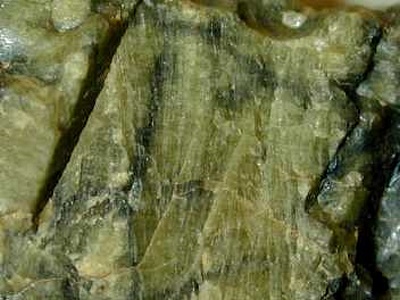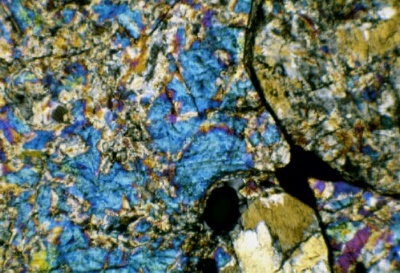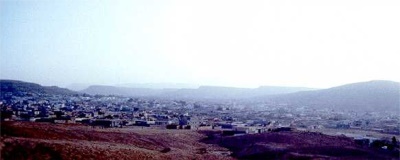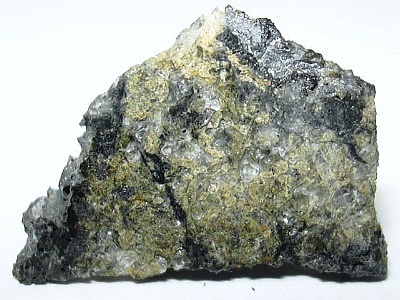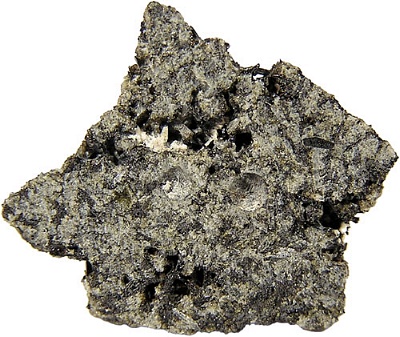IMCA Insights – April 2007
Our Favorite Achondrites, Part 1
by the IMCA Board of Directors
In the January and February issues of IMCA Insights 2007 we introduced you to Our Favorite Chondrites, and - on public demand - we would now like to present you with a selection of our Favorite Achondrites. In this issue we start off with a handful of fascinating samples representing no less than four different achondrite parent bodies, including such prominent worlds such as our own Moon, the Red Planet Mars, and the mini-planet (or differentiated asteroid) Vesta.
Peter Marmet:
The favorite achondrite in my collection is the Stannern eucrite. Eucrites can be described as extraterrestrial basalts, volcanic rocks of magmatic origin, representing the crust of their likely parent body, the asteroid Vesta. The Stannern eucrite fell 1808 May 22, 06:00 hrs in the Jihomoravsky region, Czech Republic. In 1808 it was still not clear that meteorites did fall from the sky and a lot of scientists were still convinced that these "black stones" were derived from terrestrial volcanic eruptions or alike.
A 53.7g Individual of the Eucrite Stannern, Coll. Peter Marmet
My Stannern meteorite collection sample is a 53.7 gram individual. The main piece was traded from the Vienna museum. The "missing part" was discovered by a fortunate coincidence more than a year later in a US collection. The original museum label is also shown in the picture. The Stannern fall has been described in detail but, as far as I know, only in German. So here is a translation of a small part of a German text:
"It was an early Sunday morning between 5:30 and 6 o‘clock on May 22, 1808; the sky was clear but suddenly some wafts of mist covered the region of Stannern. Some inhabitants of the nearby villages were on their way to church. Suddenly a tremendous bang could be heard like an extremely intense cannon shot, followed by some weaker bangs and afterwards a rolling, booming and whistling in the air. Some eyewitnesses later compared the noise with rattling of carts, beats of drums, some even with Turkish music. The noise and bluster lasted for about six to eight minutes."
Anne Black:
My favorite achondrite is certainly Tatahouine, for a lot of reasons. I was introduced to meteorites by Alain Carion during the Denver Shows. Of course, he always had a large assortment of meteorites, but Tatahouine caught my attention because it was so different from the others, it was green! I had no idea at the time that a meteorite could be colorful, let alone green. Not only that, but every little fragment is different, and if you look at it with a loupe, it becomes a tiny little world full of surprises, spidery veins, black pools of glass, tiny flecks of ash-color crust, and striations, just like a miniature shatter cone.
Shatter-cone-like Texture of the Diogenite Tatahouine
A thin-section of Tatahouine under cross-polarized light is even more surprising and colorful. There, the greenish stone becomes turquoise silk or peacock feathers.
Thin Section of Tatahouine under Cross-polarized Light
And I have an additional reason to like Tatahouine, I have been there! Tatahouine is a small, dusty market town in southern Tunisia, the last stop before the Sahara. I did not go there to pick up little green rocks, I didn’t even know about it then, but for archaeological reasons, and it was still a very interesting trip.
Another View of Tatahouine, Tunisia
Speaking of history, I was just told (thank you Andrzej) that Vesta, the presumed birthplace of Tatahouine (and Stannern), was discovered on March 29th, 1807. Exactly 200 years ago. Happy Birthday / Discovery Day, Vesta! And thank you for giving us Tatahouine.
Norbert Classen:
There are several lunar and Martian meteorites that I could name as my favorite achondrite, and all of them are special in the one or the other way. Since I have to choose, I will opt for lunar meteorite Calcalong Creek because it really has it all. With a low TKW of only 19g Calcalong Creek was originally found by an Aborigine meteorite hunter in the known Millbillillie eucrite strewnfield, Western Australia, but it wasn't recognized until the original Meteorite Man, Bob Haag, received it in a box of Millbillillies and found it to be "different". Its brecciated texture, the bubbly fusion crust, and the dark matrix - everything reminded him of some lunar samples he had seen at the NIPR, Japan, a few years before. So he took the small stone to the Lunar and Planetary Laboratory at the University of Arizona, where William V. Boynton and Dolores Hill soon confirmed Calcalong Creek to be the first non-Antarctic lunar meteorite. What a find!
A 0.25g Slice of Lunar Meteorite Calcalong Creek, Coll. N. Classen
Calcalong Creek is not just unique because it was the first lunar rock in private hands, and naturally demanded an exorbitant price until more lunar rocks had been recovered from the deserts of Africa and Arabia in the years to come. It is also special because of its composition. While most lunar meteorites do either represent feldspathic highland breccias or rare lunar mare basalts, Calcalong Creek belongs to the group of so-called "mingled breccias" which contain both, feldspathic and basaltic components. As if this wasn't enough, Calcalong Creek also contains a certain percentage of KREEP, the abbrevation standing for Kalium (potassium), Rare Earth Elements, and Phosphor. KREEP is indicative for the composition of the PKT (Procellarum-KREEP-Terrane) of the near side of the Moon, and so it seems probable that Calcalong Creek was originally launched from the PKT or its vicinity, the same region that has been the favorite landing site for the Apollo missions.
Christian Anger:
My favorite Achondrite is the Martian meteorite Dhofar 378, a basaltic shergottite that has been recovered from Oman. With a total known weight of only 15 grams this beautiful Mars rock is very hard to get. I was lucky enough to get a 0.84 g partslice with some fusion crust of this very small meteorite from Erich Haiderer in 2003. What makes it to my favorite achondrite? It is one of the most beautiful Martian meteorites. I like the big vesicles and the big amount of maskelynite and clear glass in it. I have polished my slice and it is a real pleasure under the microscope. And it was found on June 17, 2000 - the birthday of my daughter Katharina.
A 0.84g Slice of Martian Meteorite Dhofar 378, Coll. Christian Anger
More info on this unusual stone can be found on David Weir's website at http://www.meteoritestudies.com/protected_DHOF378.HTM
Jeff Kuyken:
Picking my favourite Achondrite was quite a challenge but a rare South American stone was my choice. The D’Orbigny meteorite was found during July 1979 while ploughing a rock-less field in the south of the Buenos Aires Province, Argentina. Because of its shape it was believed to be an Indian artefact, in particular a mortar, and was kept at the farm. It was later suspected of being a meteorite in 1998 and in 2000 a sample was identified in Vienna as being a very rare Angrite.
The stone had a mass of 16.55 kg and had a peculiar shape, somewhat like a loaf of bread but with a gently sloped and fusion crust-covered front with regmaglypts and a concave back side. The front and back sides consist of a medium to coarse-grained ophitic textured rock with a heterogeneous, highly porous coarse-grained rock sandwiched between them. The major minerals are augite, anorthite and olivine. Augite is very common in irregularly shaped open druses. There it forms euhedral elongated prismatic crystals and has a chemical composition similar to the cores of rock-forming augites. Anorthite forms laths which commonly include some olivine or augite. The dense portions of D’Orbigny resembles the other Angrites, Asuka 881371 and Sahara 99555 while with the latter, D’Orbigny shares the presence of abundant round vugs. Olivine is very common in the shells of the abundant vugs/hollow spheres. Large (up to centimetre-sized) olivines are scattered throughout D’Orbigny mimicking xenocrysts or forming Olivinite. D’Orbigny is unique in its overall structure, its richness in hollow spheres, the presence of abundant druses containing perfectly crystallized augites and anorthites, the presence of abundant glass and the presence of olivinite rocks with olivines of highly magnesian composition, comparable to olivine xenocrysts from Asuka 881371.
A Gorgeous 1.25g Slice of the Angrite D'Orbigny
This 1.25g partslice is part of the Meteorites Australia Collection (MA.05.0088) and was most likely from the central porous region of the D'Orbigny stone. Vugs/vesicles can clearly be seen alongside the highly porous coarse-grained matrix. While a little difficult to see in the photo, the vugs do have an extremely thin layer of olivine while a larger crystal is evident to the left. Much of this piece is also occupied by the abundant and irregularly shaped open druses mentioned above.
More of Our Favorite Achondrites will be published in the May 2007 issue of IMCA Insights - stay tuned, and thanks for your interest!
•
IMCA Home Page •
IMCA Code of Ethics •
IMCA Member List
•
Join IMCA •
IMCA Meteorite Info
